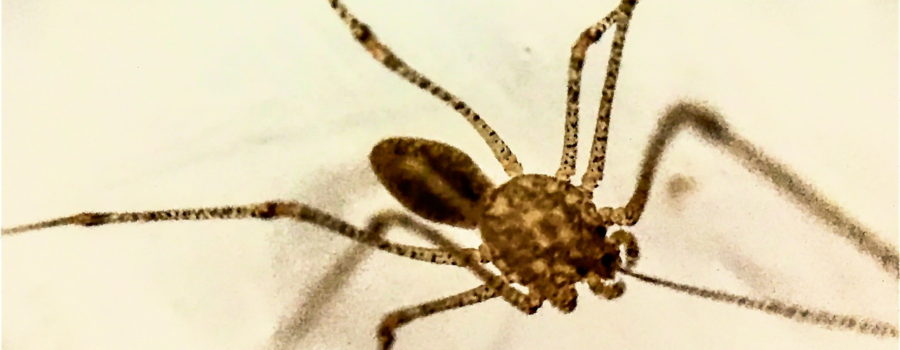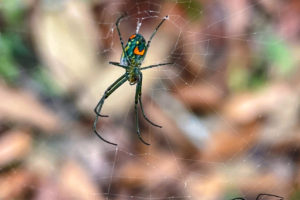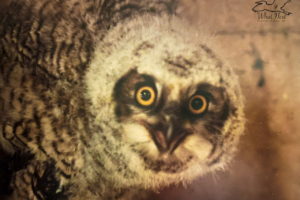Spitting Spiders Have an Interesting and Unique Hunting Style

Often people are not good for the rest of the creatures that we share this earth with, but there are some that actually benefit from us, and even from our advances in technology. One of those is the spitting spider (Scytodes thoracica). It’s a tiny little spider that in the wild lives in forests, fields, caves, under rocks, and in leaf litter. It likes quiet, sheltered cracks and crevices and prefers warm habitats. People have probably always had these little guys in their shelters since we began building semi-permanent structures, but as technology has progressed, and we have become better at keeping our shelters warm, this little spider has expanded it’s range to include most of the world. There are actually five different genera of spitting spiders and 277 different species in the world, but in the southeastern United States (and much of the world) Scytodes thoracica, is by far the most common.

Almost everyone has these little spiders hiding in cracks and crevices inside their homes. Most of the time we rarely see them since they are very small, very shy, and nocturnal. Occasionally, you will run into one when deep cleaning and once in a great while a home will have an overgrowth of them and pest control may be needed to get rid of them. Most of the time, though, they are providing the pest control. They eat other small insects that often live inside homes like silverfish, moths, flies, book lice, and weevils. They will also attack other, usually larger, spiders including black widows and brown recluses. In the wild they feast on aphids (so they’re good for your garden, too), moths, small butterflies, beetles, and again, other spiders. They are solitary little spiders and only get together to mate and after mating they separate again, so except in an overgrowth situation inside a house, you almost never see more than one of these guys at a time.

Unlike most spiders, spitting spiders have six rather than eight eyes. While most spiders have very keen vision, spitting spiders do not see well at all. Instead, they navigate, find prey, and even find mates by tapping with their first set of legs and by sensing smells, chemicals, and pheromones via some hairlike structures on the first two pairs of legs. Their legs are long and kind of gangly, even by spider standards, which makes them much slower than most spiders, but is ideal for using their legs for sensory purposes. Another unique thing about spitting spiders is that they don’t spin webs to capture prey or hide and jump on unsuspecting insects. Instead, they find their prey when it is resting. After finding and identifying their prey, spitting spiders spit out a mass of venom and sticky silk. They spit this silk from a pair of glands under the cephalothorax, which requires them to lift up the first sets of legs. The silk is sprayed in a zigzag pattern over the victim which both traps them and paralyses them. After the prey is immobilized, the spitting spiders will bite them with a second venom that liquifies the body, allowing the spider to consume it. This hunting style allows spitting spiders to hunt and kill prey that is significantly larger than they are. They also use this venom and silk mixture as a defense against other predators.

Even though I’m a huge fan of spiders, I don’t generally let them live inside my house. I capture them and move them back outdoors where they belong. But I do let spitting spiders stay in the house. I live in an older mobile home, and it’s not exactly bug proof, so having a few spitting spiders inside helps to keep the bugs to a minimum. I also like these little spiders because even though they have two types of venom, they are totally harmless to people and pets. First, as stated earlier, they are very shy and try to avoid us if at all possible. Second, they are simply far to small to be able to bite or harm anything larger than a large insect. This particular spider was guess where? In my bathroom! I happened to see it hiding quietly in a corner, and just had to pester it a little bit and get some photos. Even though they are common inside, we don’t see them often, so when I got the chance to get images of one, I couldn’t resist. They aren’t the most colorful or beautiful photos, but I was happy to be able to capture it’s cool speckled pattern, especially on such a small spider. I know that most folks are disturbed by knowing that there are little spiders living in their homes, but it actually makes me kind of happy since I know they are keeping other, more unpleasant bugs at bay.





Recent Comments